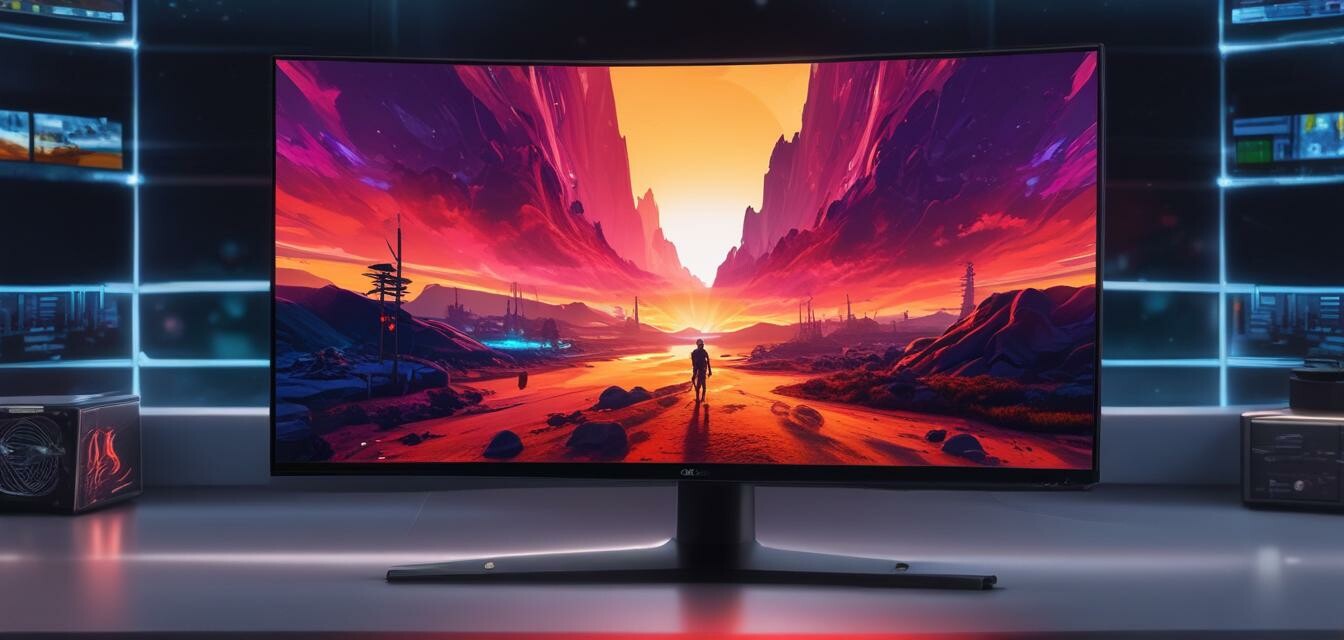
Top Things to Know Before Buying an Ultrawide OLED Monitor
- Understand the benefits of ultrawide monitors for gaming.
- Consider resolution and refresh rate for optimal performance.
- Check compatibility with your gaming setup.
- Evaluate the monitor's features including G-Sync and FreeSync support.
- Budget wisely to find the best option for your needs.
Choosing the right ultrawide OLED gaming monitor can be a daunting task, especially with so many options available. It’s crucial to consider several factors to ensure you select the best fit for your gaming needs and budget. This guide will walk you through the essential tips and considerations to help you make an informed purchasing decision.
Why choose an ultrawide OLED monitor?
Ultrawide OLED monitors offer a range of advantages that enhance your gaming experience significantly. Here are some benefits:
- Immersive gaming experience: The wide aspect ratio provides a more immersive field of view, letting you see more of the game world.
- Realistic colors: OLED technology delivers vibrant colors and deep blacks, increasing visual fidelity.
- Reduced eye strain: Larger screens allow for a more relaxed view, reducing the need for constant adjustments.
Key features to consider
When considering an ultrawide OLED monitor, here are key features to look for:
- Resolution: Higher resolutions such as 3440x1440 or 2560x1080 provide sharper images.
- Refresh Rate: A refresh rate of at least 120Hz is ideal for smooth gameplay.
- Panel Type: Look for true OLED panels for the best color performance.
- Adaptive Sync Technology: Consider monitors with G-Sync or FreeSync for better gameplay without screen tearing.
Compatibility with your gaming setup
Before making a purchase, ensure that the ultrawide OLED monitor is compatible with your gaming setup:
Graphics Card Compatibility
Make sure your graphics card supports ultrawide resolutions. Some older models may struggle with higher resolutions.
Connection Ports
Check for HDMI or DisplayPort support as these are essential for connecting your monitor to your gaming system or PC.
Setting up your ultrawide OLED monitor
Proper setup enhances performance and usability:
- Positioning: Position the monitor at eye level to prevent neck strain.
- Calibration: Calibrate the monitor settings for brightness, contrast, and color accuracy.
- Multi-monitor setups: If you plan on using multiple monitors, ensure your graphics card and monitor support it.
Budget considerations
Setting a budget is crucial when looking for the perfect ultrawide OLED monitor. Prices can vary widely based on features and brand. Here’s a breakdown to guide you:
| Feature | Low Budget ($) | Mid-Range ($$) | High-End ($$$) |
|---|---|---|---|
| Resolution | 2560x1080 | 3440x1440 | 3840x1600 |
| Refresh Rate | 60Hz | 120Hz | 144Hz or higher |
| Panel Type | VA | IPS | True OLED |
| Adaptive Sync | No | FreeSync | G-Sync compatible |
Where to find the best ultrawide OLED monitors
While shopping for your ultrawide OLED monitor, you can visit our dedicated sections for more options:
Pros
- Immersive wide screen for a fantastic gaming experience.
- Vibrant colors and deep contrast with OLED technology.
- Enhanced multitasking capabilities with extra screen real estate.
Cons
- Higher price point compared to traditional monitors.
- Requires substantial desk space for proper setup.
- May have compatibility issues with some graphics cards.
Conclusion
Choosing the right ultrawide OLED monitor involves careful consideration of various features and compatibility with your gaming setup. By understanding your gaming needs and budget, you can find the perfect monitor that elevates your gaming experience. Don’t forget to explore our Buying Guides for more insights on selecting the ideal gaming monitor for you.